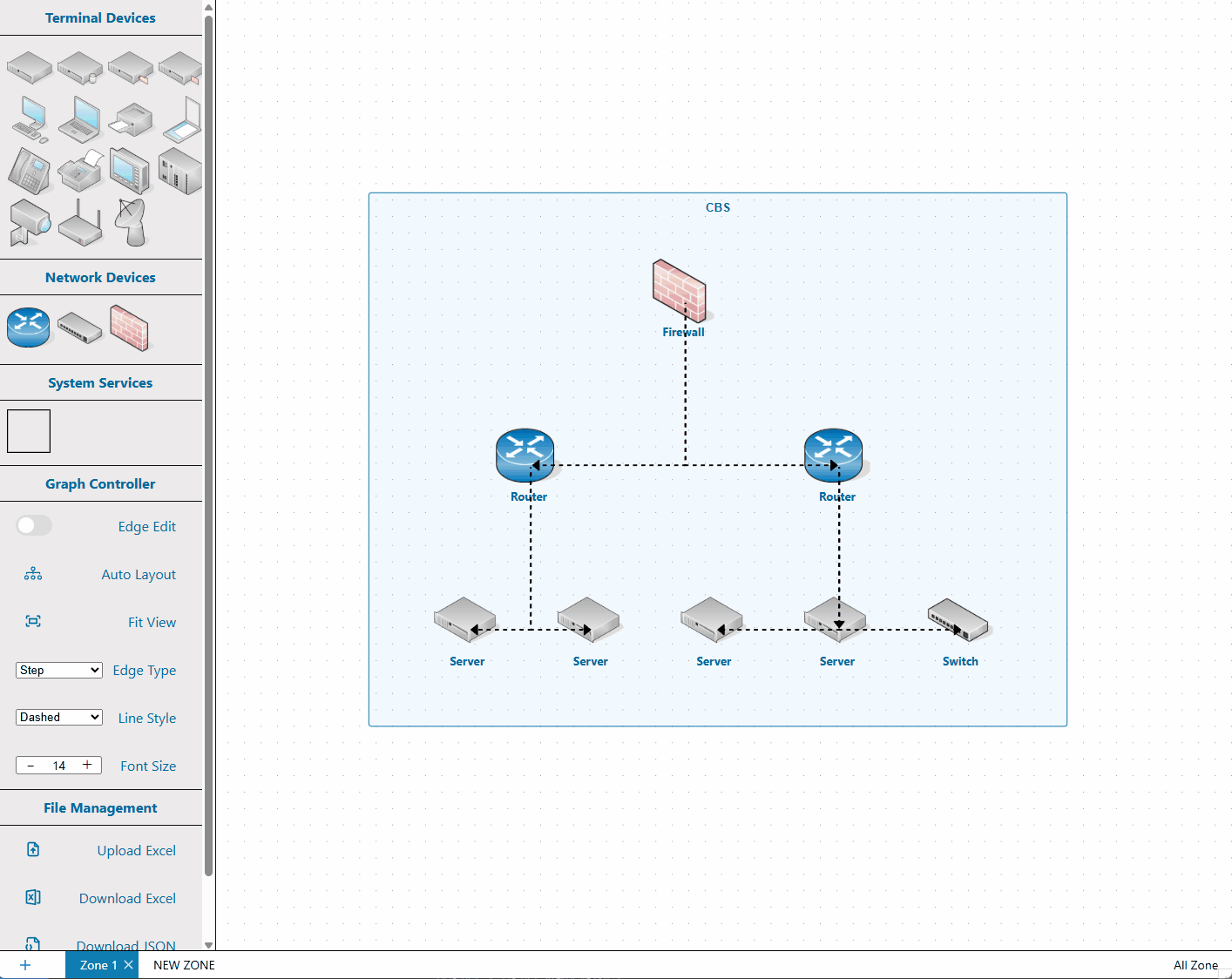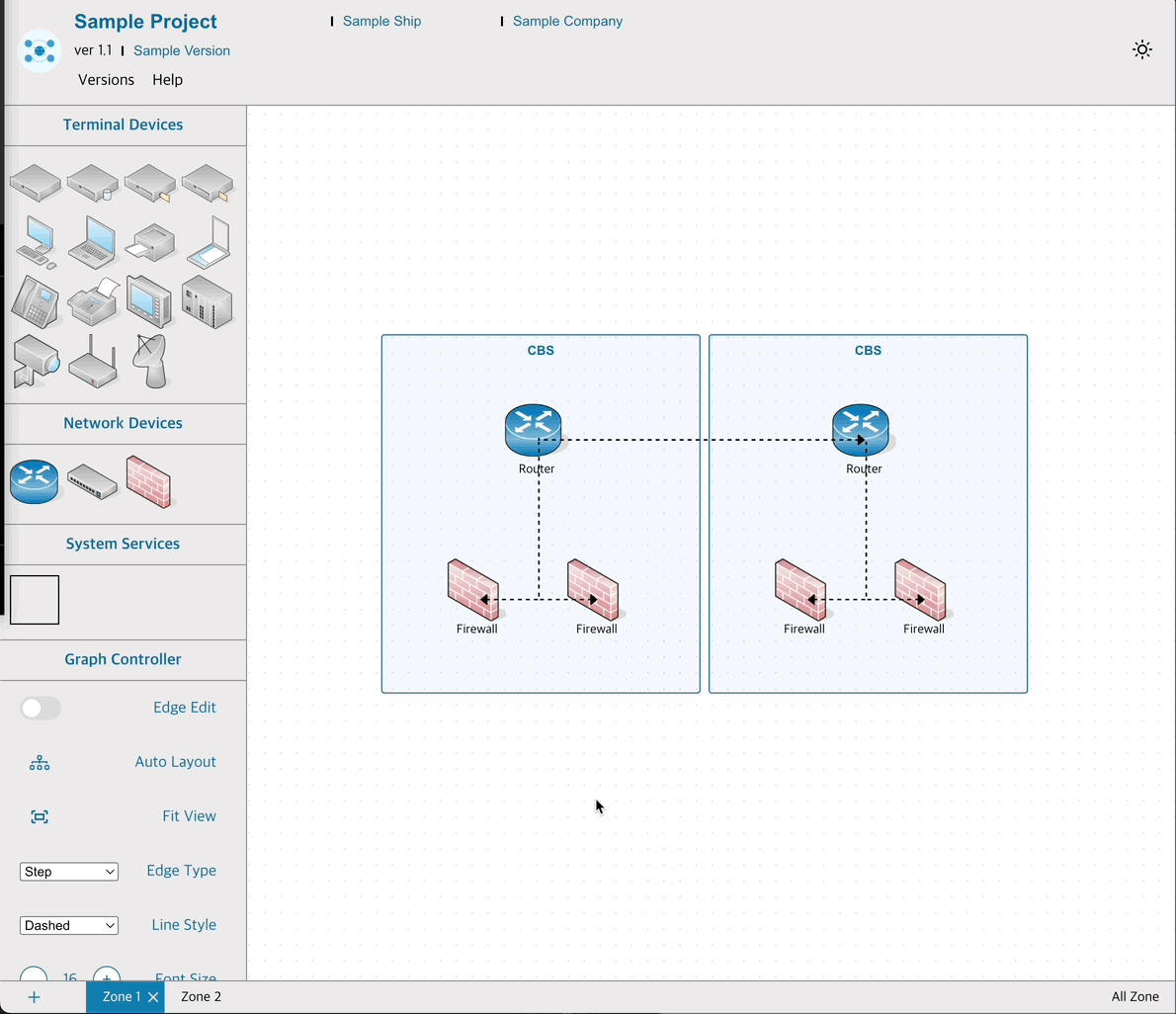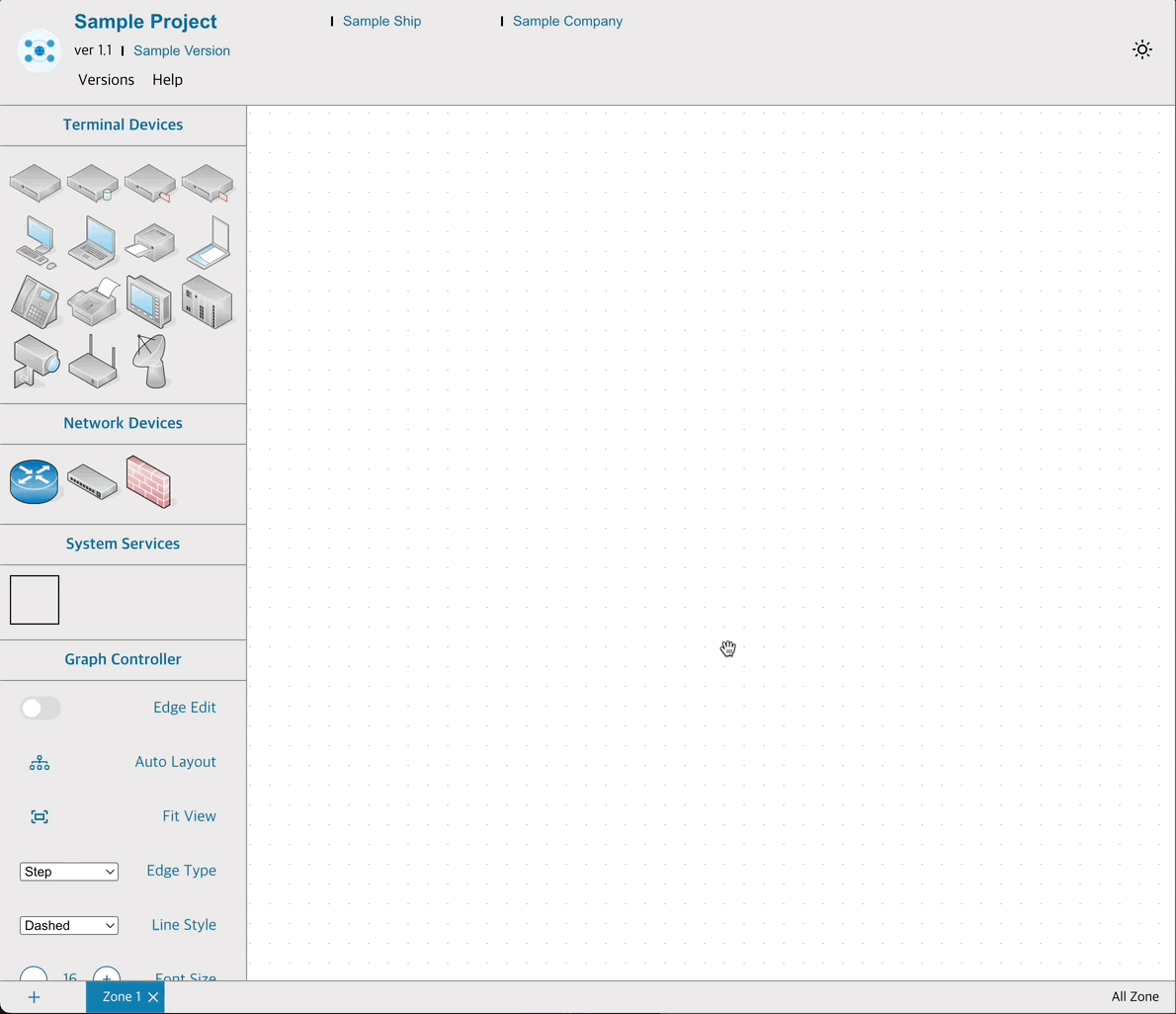4. Exporting and Saving
In this guide, you'll learn how to save or load the network topology you’ve created.
Palito supports both JSON and Excel formats, allowing for flexible data management.
1. Exporting JSON Data
Click the Download JSON button in the left sidebar to export the data for the currently visible Security Zone in JSON format.

Sample JSON output:
{
"id": "zone-1",
"name": "Zone 1",
"nodes": [
{
"id": "1",
"type": "custom",
"position": { "x": 100, "y": 200 },
"data": {
"component_name": "Server",
"type": "Server",
"security_zone": "zone-1",
"system_category": "Other",
"other_system_connection": ["2"]
}
}
],
"viewport": {
"x": 0,
"y": 0,
"zoom": 1
}
}
If you are in All Zone view, you can download the data for all Security Zones at once.

Sample JSON output:
[
{
"id": "zone-1",
"name": "Zone 1",
"nodes": [ ... ]
},
{
"id": "zone-2",
"name": "NEW ZONE",
"nodes": [ ... ]
}
]
2. Exporting Excel Data
Click the Download Excel button to export information about all system nodes in Excel format.
This is useful for external administrators to view or edit.
3. Uploading Excel Data
Click the Upload Excel button to re-upload a previously downloaded Excel file and restore the topology as it was.

Note:
- The CBS node names must not be duplicated within the same Security Zone.
- If duplicates exist, the topology may not be restored correctly.